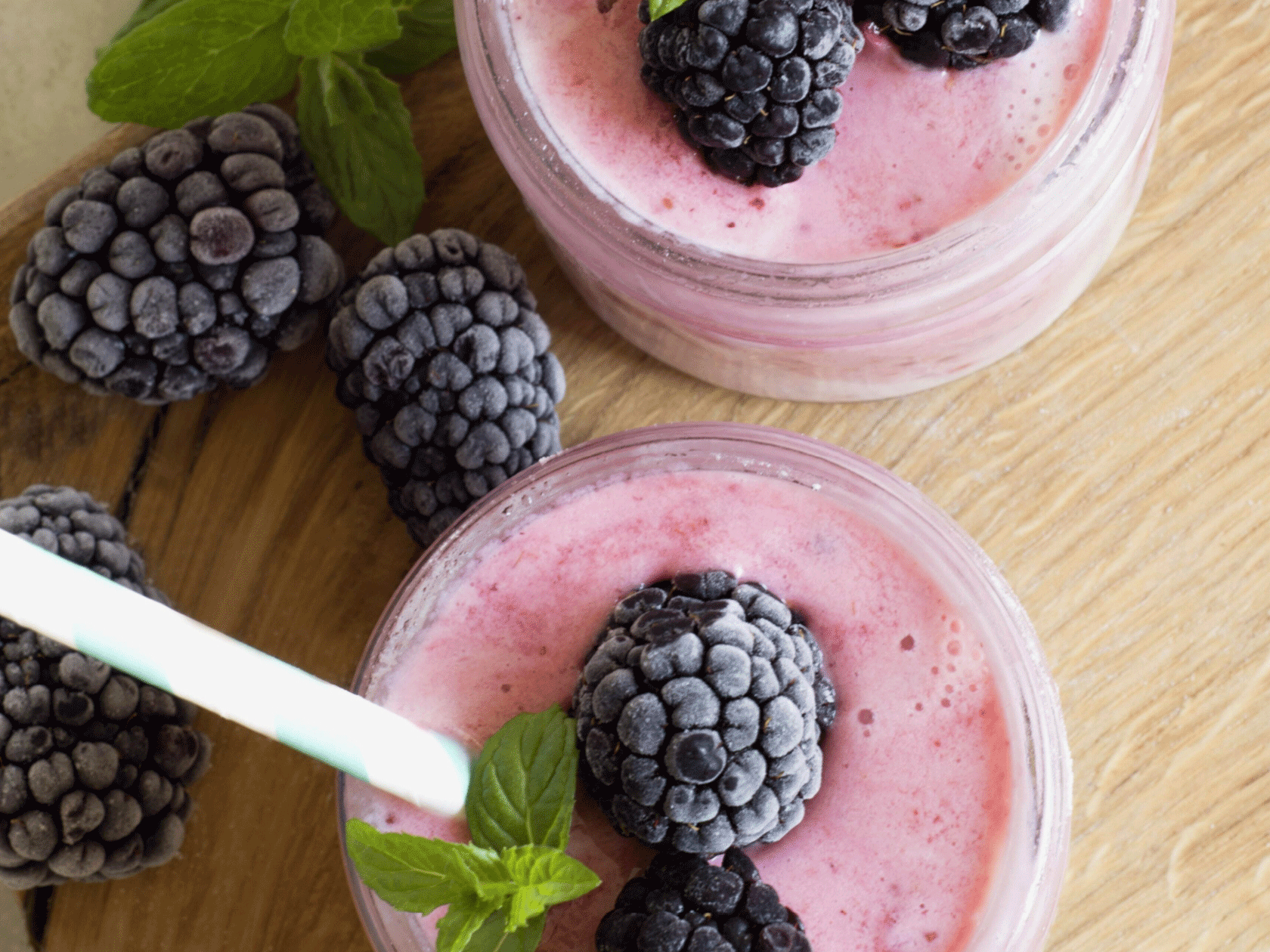Smoothies probably trump juices when it comes to nutritional content, say experts and researchers.
Juice cleanses are everywhere, with pseudo-scientists claiming a host of health benefits (you probably know someone who swears by kicking the day off with a big old glass of celery juice, for example). While there’s nothing wrong with juice per se – who doesn’t love a cold OJ to start the day? – we may be paying too much attention to them, and not enough to alternative fruit-based drinks.
That’s because smoothies are probably better for most people than juicing. Perhaps that’s a surprise, given that smoothies can often feel richer, thicker and more decadent, but blended drinks really do have the upper hand, according to dietician Catherine Rabess.
You may also like
Breakfast ideas: nutritious mixed berry smoothie bowl for busy mornings
“It’s quite common to see people turning to either a juicing diet or just adding in some form of juice to their day to ‘boost immunity’, or ‘shed weight’. I think that can have quite detrimental effects on people’s long-term relationship with eating,” she says. But aside from the negative mental impact of juicing diets, Rabess says that smoothies also win in the nutritional wars too.
Are juices and smoothies healthy?
The first problem that comes with relying on juices for health benefits is that they lack one hugely important nutrient. “A lot of fibre is extracted when going through the juicing process,” says Rabess, who is also an expert in gut health. That’s because the fibre tends to lie in the seeds, pulp and skins of fruit and veg, which is lost in juicing.

“There are different types of fibre within the different parts of fruits and vegetables. You tend to find insoluble fibres, such as cellulose, in the skin of a fruit or vegetable. This is a really, really important fibre that helps with digestion and gut health,” she explains. When blending, this fibre remains intact, giving smoothies the extra edge.
And not all of fibre’s benefits are to do with the gut. “When you’re juicing, you have to use substantially more fruit and vegetables to get the same volume, because so little of it is extracted. That increases the natural sugar content of the drink,” Rabess explains. “However, without the fibre, the release of that sugar into the blood will be less regulated.”
The NHS advise just 150ml of unsweetened juice as one of your five a day. But you should remember that while the fibre can regulate the sugar content, a smoothie laden with bananas is still going to have a high sugar content.
You may also like
How much sugar is in fruit and should you avoid it on a low-sugar diet?
Of course, juices do contain vitamins and minerals, but smoothies tend to maintain more of their nutrient content. In a 2014 study, researchers compared the micronutrient levels of fruit drinks that had been blended versus juices. They found that “juices that had been prepared by blending whole fruits had stronger antioxidant activities and contained larger amounts of phenolic compounds [anti-oxident and anti-inflammatory compounds] than juices that had been prepared by juicing the flesh fraction of the fruit.” However, they did find that juicing some fruits, including apple and orange, led to drinks that are higher in vitamin C – perhaps something to consider if you want to ward off a winter cold.
The final reason Rabess loves smoothies is because they can be loaded with a host of other ingredients that add big health benefits.
How to boost your smoothie
“I love putting in linseeds and flaxseeds for an extra source of soluble fibre that supports digestion, but they also contain omega-3s which have so many benefits for heart health and contain anti-inflammatory properties,” she says.
You may also like
Why is fibre so good for you? Nutritionists explain the benefits of a high-fibre diet
“I tend to opt for one fruit and one veg, rather than a load of fruit in one. I might add cucumber and or some dark green leafy veggies – they contain lots of iron which is a really good way of getting additional micronutrients and combining minerals and vitamins for absorption.”
The importance of that shouldn’t be overlooked, as nutrients like iron need to be taken with vitamin C, and vitamins A, D, E and K are best absorbed with a source of fat. Rabess also recommends adding a source of protein or unsaturated fat, such as nuts or milk, to smoothies to really boost the nutritional content.
“I think both juices and smoothies can have a place within a healthy, balanced diet, but I would certainly promote smoothies over juicing because of their extra beneficial impact,” she says. Time to dust off that blender.
Images: Pexels/Getty
Source: Read Full Article
